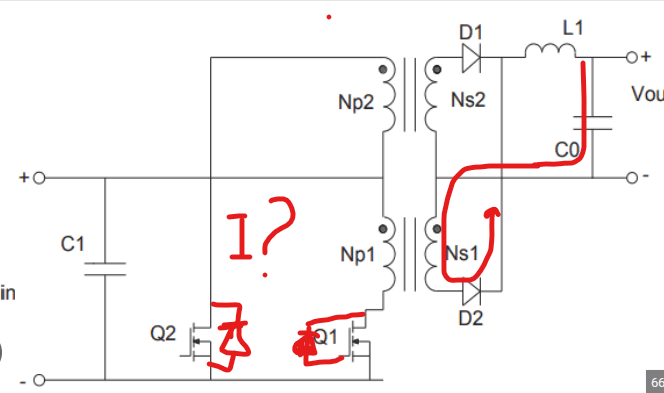I am having a slight confusion regarding the flow of the currents in the push-pull and full-bridge during the dead time. Considering a push-pull converter during the ON and dead time.
Image Link
In the push-pull converter during the ON time of the MOSFET the current flows and the inductor and the capacitors at the secondary both charges and stores energy. During the off time, the inductor is a source of current for the load and the current flows as shown. I know that this is the stored energy of the inductor but still this current causes a flux in the secondary and primary should also have some current flow and voltage developed then. But since the circuit is open due to mosfet therefore there seems no current to be flowing. But we do have a body diode in the MOSFET... Can we say that the current flows due to the body diode?
In the full bridge this situation also occurs during dead time when all the mosfets are turned off.
Kindly help me in this slight confusion as I want to know what exactly happens, there are many different possibilities coming in my mind, but I want to know what exactly happens.


